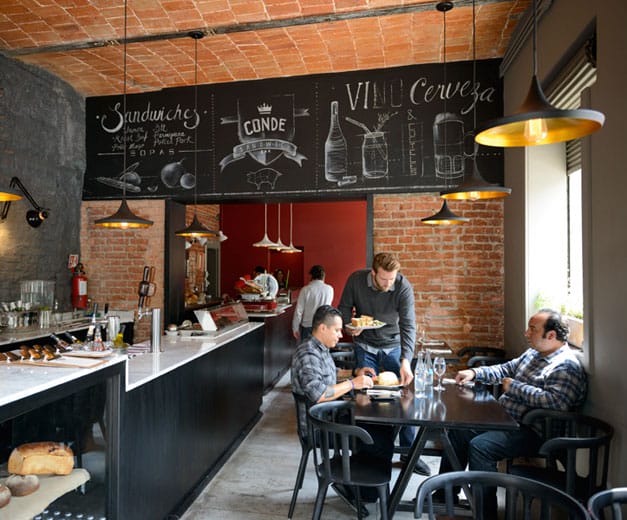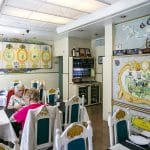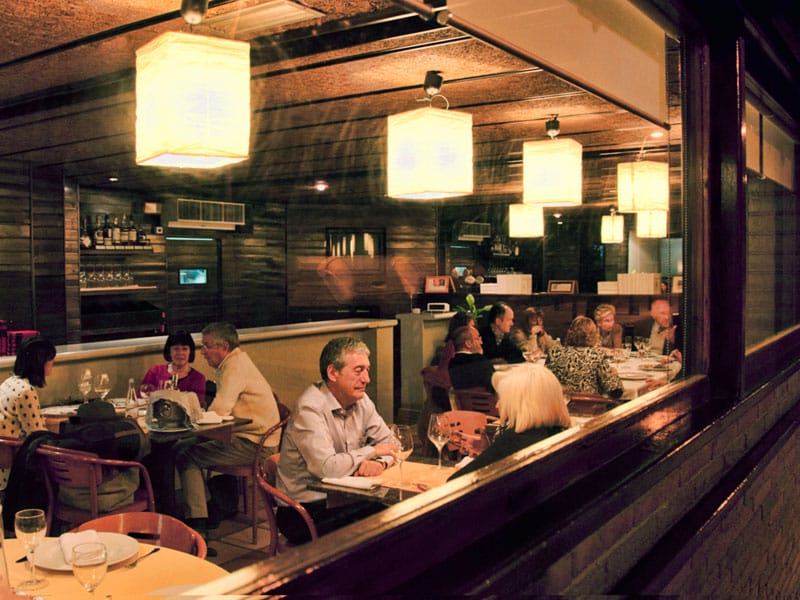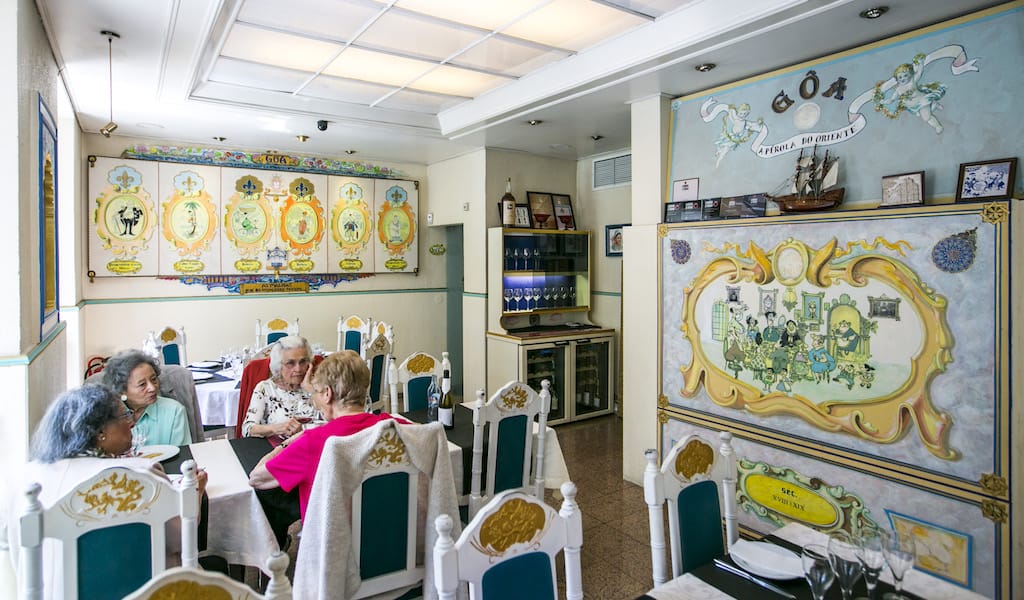Update: This spot is sadly no longer open.
The torta – Mexico’s answer to the sandwich – if not precisely a work of art, is a touchstone of craftsmanship. In a toasted roll, in addition to meat and cheese, the torta is painstakingly adorned with refried beans, avocado, chili peppers, onions and tomatoes. It’s one of Mexico City’s street food staples, with literally thousands of dedicated stalls spread out over various neighborhoods.
But until recently, a torta was about all you could get between two pieces of bread here. Lately, some enterprising and resourceful restaurateurs, both Mexican and foreign, have opened fancy sandwich shops in the trendy and well-heeled neighborhoods of the city. While the sandwiches are considerably more expensive than tortas (which tend to cost between 20 and 40 pesos, or about US$1.50 to $3), they offer satisfying ingredients and preparations heretofore unusual, if not impossible, to find in the city. And customers are sitting and eating them in comfortable locations, rather than on their feet on the sidewalk.
One of our favorites among these new places is Conde Sandwich, on Calle Álvaro Obregón in the heart of fashionable Colonia Roma. It offers the winning combination of an informal setting with elegant food. Managed by a young, bearded German, it is a couple of doors down from, and associated with, Fournier Rousseau, one of the best bakeries in the city. All the sandwiches are fashioned from their fresh bread. With no more than 10 tables, it’s quiet and low-lit, with a strikingly small menu – seven sandwiches, two salads and two soups. The preparations are impeccable and pleasing to the eye.
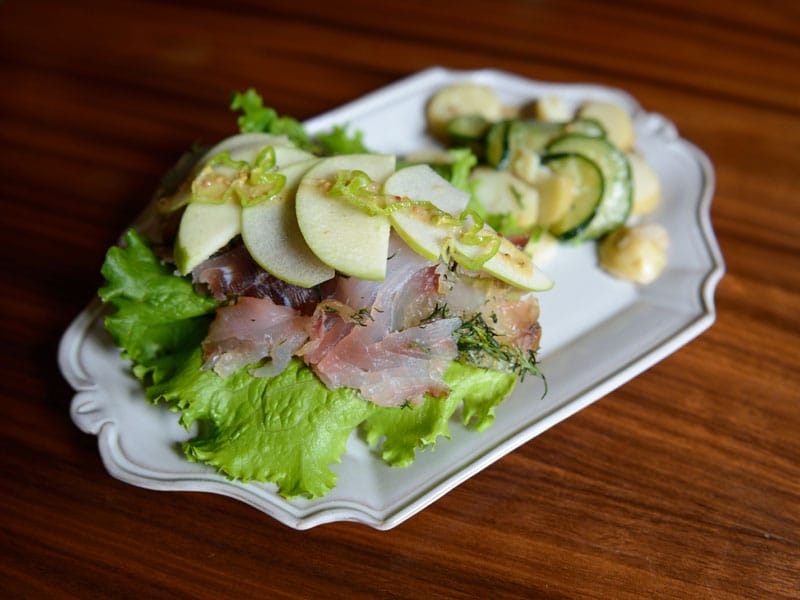
The soups are served in bread bowls. Conde’s onion soup is one of the best in the city, but the other choice – creamy cauliflower with tangy balsamic vinegar – is sublime. One of the most popular sandwiches is thinly sliced rare roast beef served on a baguette, garnished with homemade horseradish sauce and Yucatan-style pickled onions with chili. But we liked even more the one they call the “Ocean Drive”: an open-faced number with lightly smoked pargo (a fish similar to sea bream), avocado, Granny Smith apple and lettuce. The Serrano ham sandwich is served with arugula and tomato in a ciabatta, and the roast chicken is served in a brioche, with avocado and house-made mayonnaise. All the sandwiches come with a side order of sliced potato and cucumber salad.
As “fancy” as Conde Sandwich is, by Mexican standards, prices are not unreasonable. The soups cost 80 pesos (about US$6) and the sandwiches oscillate between 120 and 145 pesos (about $9 and $11). To accompany the food, a mug of Cosaco – a Mexican craft beer – or a glass of Lola + Carmen (a tasty Mexican wine made with a combination of Cabernet, Grenache and Zinfandel grapes) are 75 pesos each (a little under $6). Service is notably friendly, although a little distracted: We had to ask for more horseradish for our roast beef twice before we got it. The clientele tends toward hipsters and artsy types.
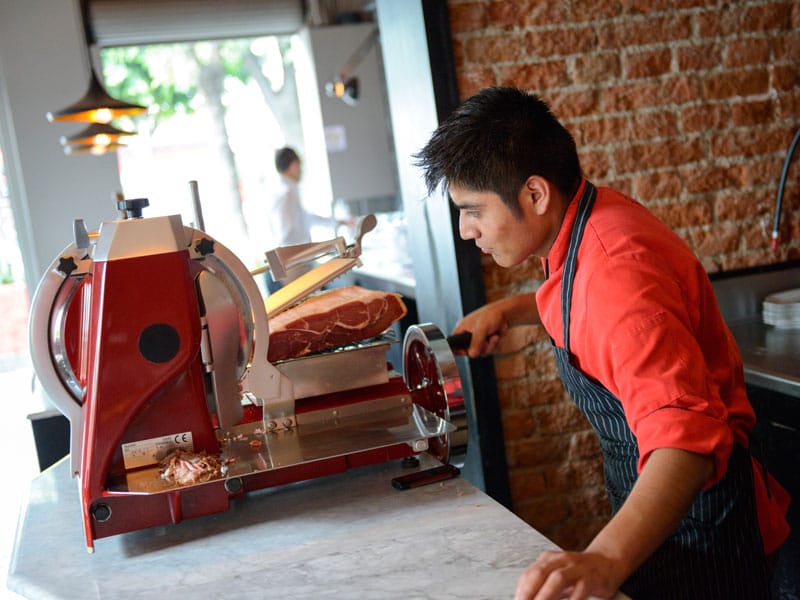
About that name: There is no specific word for “earl” in Spanish. “Count” – conde – is about as close as you can get, and hence the name of the restaurant: a tribute to the Earl of Sandwich.
Published on September 16, 2014
Related stories
May 5, 2019
Porto | By Culinary Backstreets
PortoOn our Beyond the Barrell culinary walk in Porto, we visit Luis at Azeitoneira do Porto, which has been serving loyal customers since 1862 - and is training the next generation to take over the family business.
March 21, 2013
Barcelona | By Johanna Bailey
BarcelonaAt first glance, Restaurant Roma doesn’t appear to be anything out of the ordinary. The nondescript brown tiles covering the floors, the dark wood bar, the vaguely Mediterranean-inspired wall décor and the rectangular paper Ikea lamps are similar to those at hundreds of other midrange restaurants throughout Barcelona. Situated on a quiet street in residential…
August 29, 2018
LisbonLisbon’s communities from Portugal’s former colonies provide the strongest link to the country’s past, when it was the hub of a trading empire that connected Macau in the east to Rio de Janeiro in the west. Though integral elements of Lisbon life, these communities can sometimes be an invisible presence in their adopted land, pushed…







































